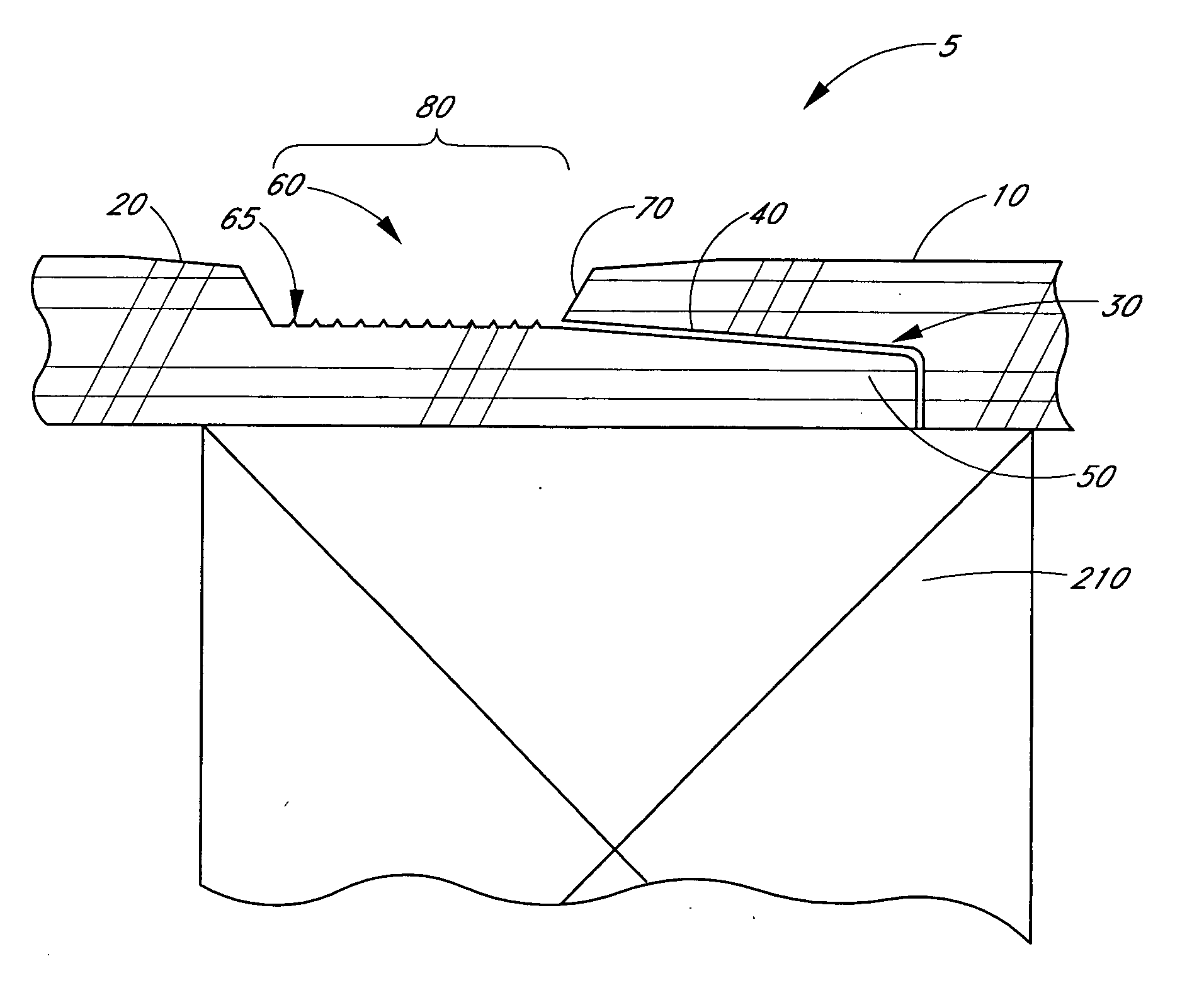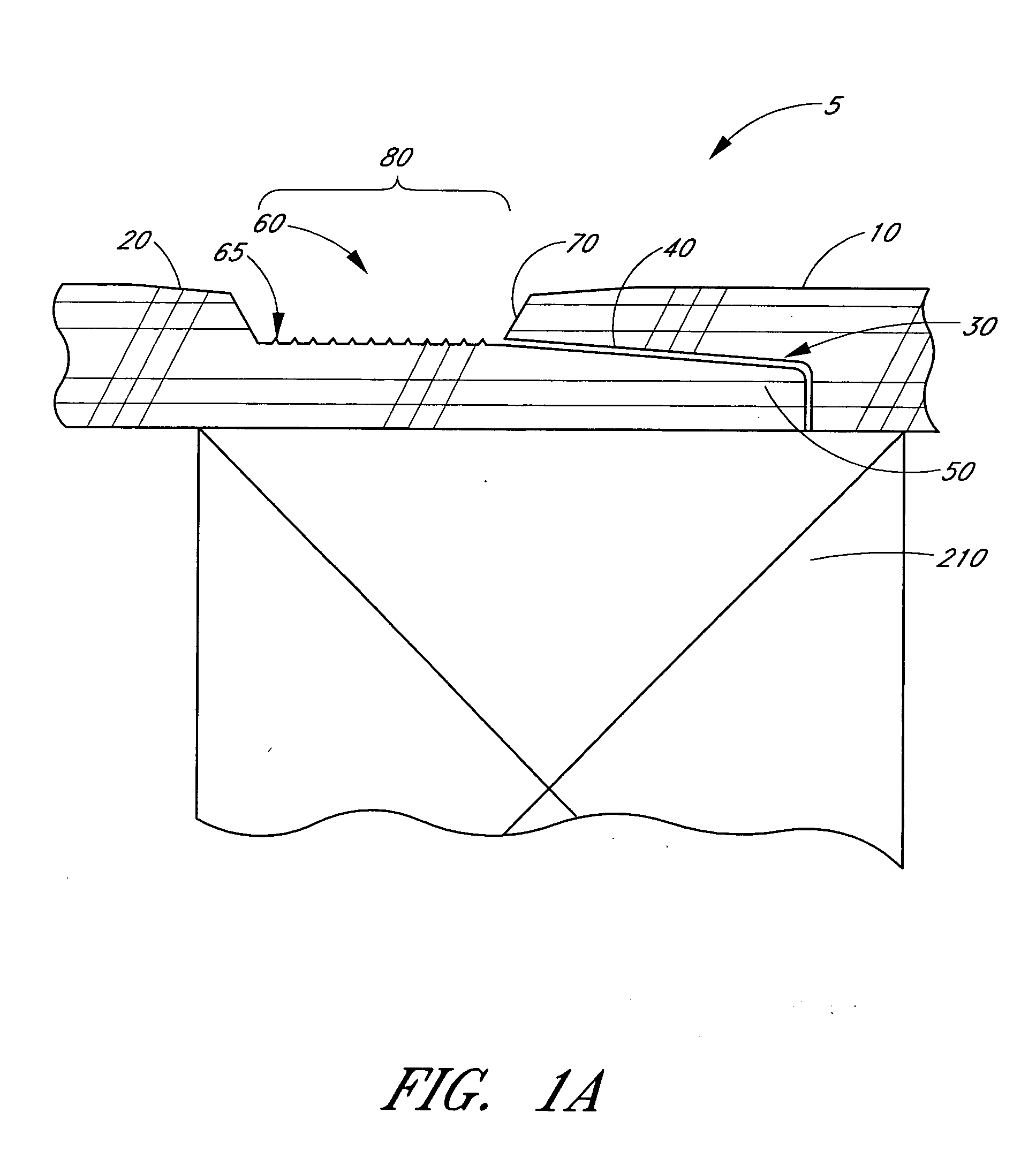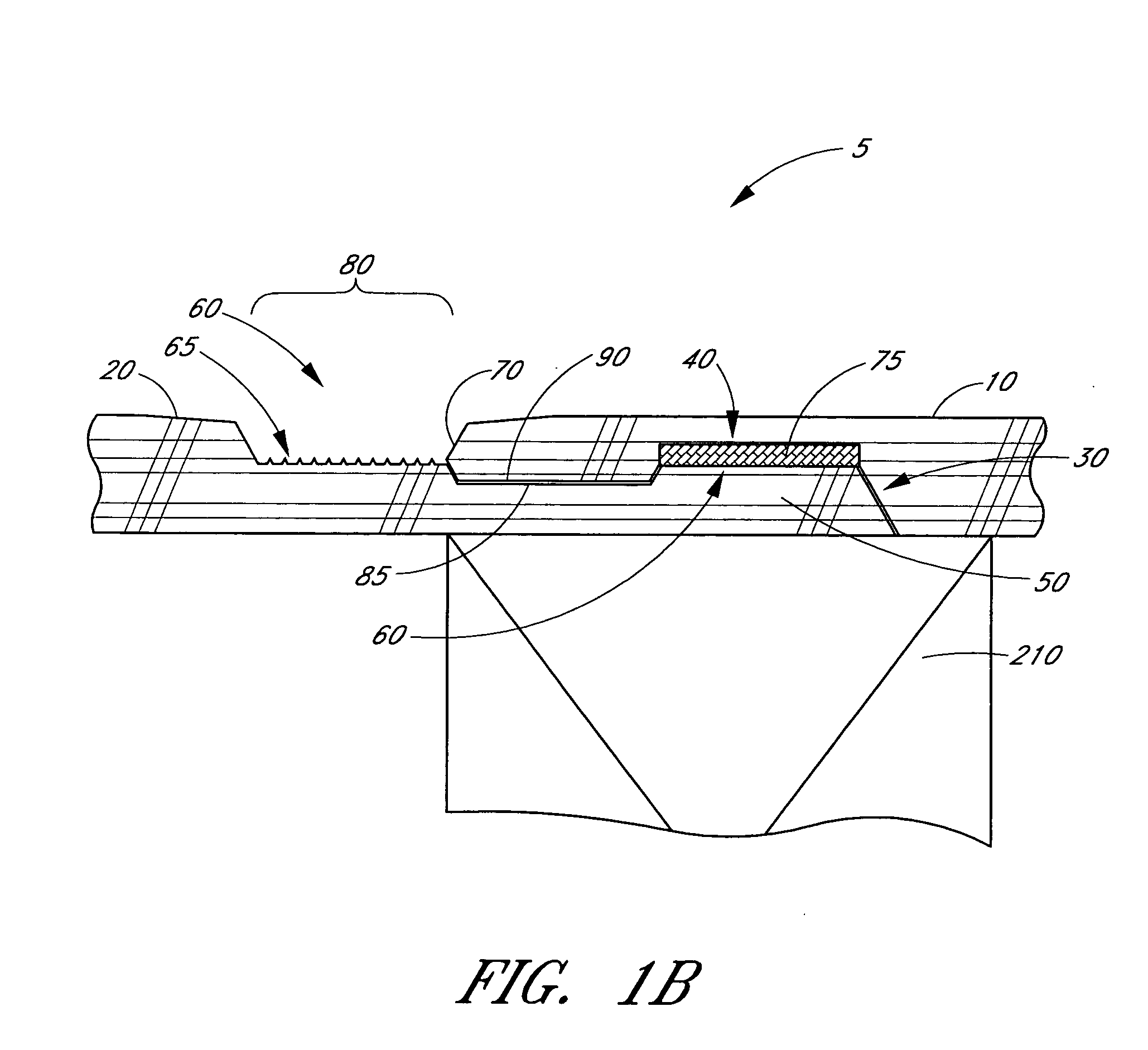Building material and method of making and installing the same
a technology of building materials and materials, applied in the field of building materials, can solve the problems of time-consuming and expensive treatment, dense or brittle materials, and high cost of drilling holes,
- Summary
- Abstract
- Description
- Claims
- Application Information
AI Technical Summary
Benefits of technology
Problems solved by technology
Method used
Image
Examples
Embodiment Construction
. Nail Spacing in Nail Spacing Field (on framing Value (lb / ft) Perimeter element) 1 / 8" deflection Ultimate load 6" 12" 150 208 6" 6" 162 212 4" 6" 175 308 3" 6' 191 397 2" 6" 178 488
[0112] To provide additional shear strength to the panel system, at least one biscuit 1105 may be inserted along the edge of the panel 1110a for receipt in a corresponding slot along the edge of an adjacent panel 1110b as shown in FIG. 26. Although FIG. 26 shows a panel system 1100 without the joint 105, the biscuits 1105 may be used in conjunction with the joint to increase the shear strength of a system of the engineered panel joints 100. The slots may be formed along the edge of the panels 1110a, 1110b by a jointer router. Prior to connecting two adjacent panels 1110a, 1110b together, the biscuits 1105 may be inserted in the slots of at least one of the panels. The biscuits 1105 may be connected to the panels 1110a, 1110b by any suitable fastener including chemical bonding, mechanical bonding and adhe...
PUM
 Login to View More
Login to View More Abstract
Description
Claims
Application Information
 Login to View More
Login to View More - R&D
- Intellectual Property
- Life Sciences
- Materials
- Tech Scout
- Unparalleled Data Quality
- Higher Quality Content
- 60% Fewer Hallucinations
Browse by: Latest US Patents, China's latest patents, Technical Efficacy Thesaurus, Application Domain, Technology Topic, Popular Technical Reports.
© 2025 PatSnap. All rights reserved.Legal|Privacy policy|Modern Slavery Act Transparency Statement|Sitemap|About US| Contact US: help@patsnap.com



